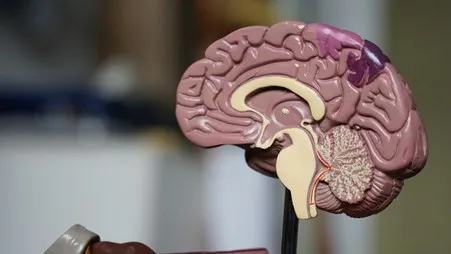Caring for a loved one with Alzheimer’s disease can be a challenging journey filled with emotional highs and lows. Understanding the nuances of the disease is paramount to providing the best care possible. It’s important to arm yourself with knowledge of the disease’s progression, communication techniques, and self-care strategies. In this article, we explore practical tips that can help you navigate the complexities of Alzheimer’s care.
Understanding Alzheimer’s Disease

Alzheimer’s disease is a form of dementia that is a neurodegenerative disorder that affects memory, thinking, and behavior. Recognizing the signs and symptoms is the first step in developing an effective care plan. Familiarity with the dementia stages can help you anticipate changes in your loved one’s condition, allowing for timely adjustments in care.
A tailored care plan should consider the person’s individual needs and the disease’s progression. Regular monitoring can detect subtle changes that may signal the need for different interventions or support. This also includes being vigilant about potential health complications that are common in Alzheimer’s patients, such as infections or issues with mobility.
Professional guidance is often necessary to navigate complex medical advice and care strategies. Don’t hesitate to consult with a neurologist, geriatrician, or Alzheimer’s specialist who can provide personalized recommendations. Support groups and educational resources can also offer invaluable advice and empathy from people on similar journeys.
Creating a Safe and Comfortable Environment

As Alzheimer’s progresses, the home environment needs to be adapted to ensure safety and comfort. Start by eliminating tripping hazards and installing safety locks to prevent wandering. Adequate lighting can aid in visibility, potentially reducing confusion and agitation, especially during evening hours when “sundowning” may occur.
Consider adapting the living space to account for mobility issues. Accessibility modifications, such as grab bars in the shower or ramps for wheelchairs, can greatly enhance the patient’s ability to navigate the home. It’s also essential to have a straightforward layout with clear pathways to minimize disorientation.
Creating a serene and comfortable environment can be achieved through noise reduction and keeping a consistent routine. Familiar objects and photographs can provide comfort and help maintain a connection to past memories, which can be soothing for those with Alzheimer’s.
In addition to physical adaptations, it’s worthwhile to introduce technology designed to assist Alzheimer’s patients. Devices like GPS trackers, automated medication dispensers, and communication aids can supplement caregiving efforts and offer peace of mind.
Effective Communication Strategies with Alzheimer’s Patients
Communication with a person with Alzheimer’s requires patience, empathy, and understanding. Use simple, direct language, and allow them time to respond. Avoid challenging or correcting misremembered information, as this can lead to unnecessary conflict.
Non-verbal cues become increasingly essential as the disease progresses. Pay attention to facial expressions and body language, both yours and the patient’s, as these can convey feelings and needs when words fail. A gentle touch or a calm presence can reassure someone who feels anxious or confused.
Encourage the expression of thoughts and feelings. Sometimes, an Alzheimer’s patient may struggle to articulate specific needs or emotions, so be receptive to indirect or non-traditional forms of communication, such as drawing or using symbols.
Managing Behavioral Changes and Challenges in Alzheimer’s

Alzheimer’s disease can lead to significant behavioral changes, such as aggression, wandering, or mood swings. Understanding the triggers for these behaviors, like a change in environment or routine, can help in managing them more effectively. Always approach with calmness and reassurance to prevent escalation.
For aggressive behavior, assess the situation to identify any immediate causes, like physical discomfort or overstimulation. Respond with a soothing voice and suggest a distraction or shift in activity that might calm the patient. Meanwhile, implementing structured routines can provide stability and reduce anxiety.
In the case of wandering, consider setting up a safe perimeter around the home, using monitoring devices, and having a plan in case the person does become lost. Alert neighbors and local authorities about your loved one’s condition so they can assist if needed.
It’s also important to recognize when professional help is needed. If behavioral issues become unmanageable, a healthcare provider might suggest medication or therapeutic interventions to alleviate distress for both the patient and the caregiver.
Overall, caring for a loved one with Alzheimer’s requires a compassionate and informed approach. These strategies are designed to support both patients and caregivers through the demanding landscape of Alzheimer’s care. By fostering a safe environment, employing effective communication, and managing behavioral challenges, caregivers can provide dignified care that also prioritizes their own well-being.

